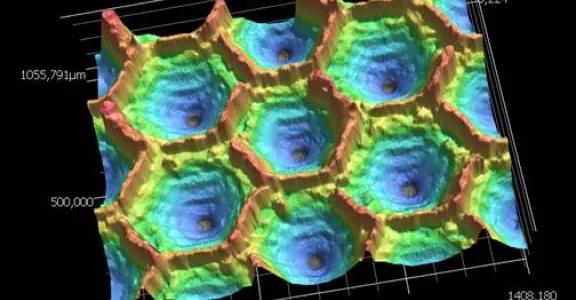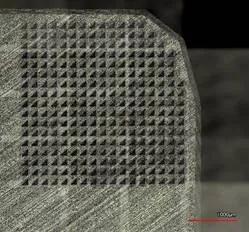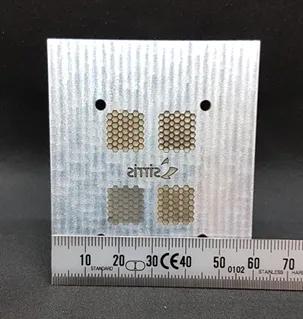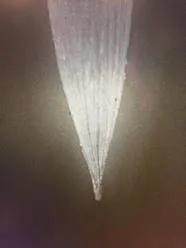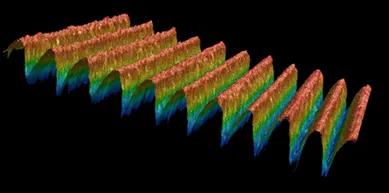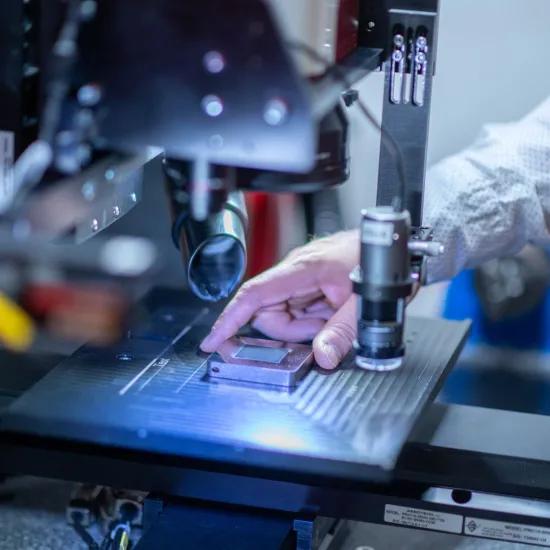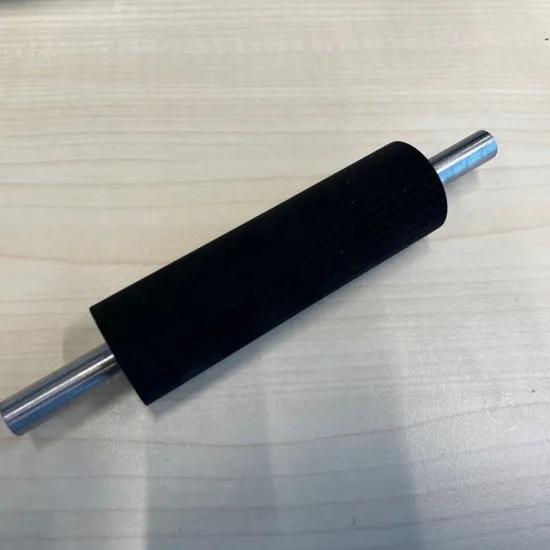The potential of lasers has become huge thanks to recent technological developments, thereby also increasing the potential of surface functionalisation by means of laser texturing. New functionalities and possibilities become available to the industry and Sirris will investigate these for you.
The functionalisation of surfaces by means of textures, and in particular by means of laser-applied textures, has become increasingly important in recent times. Over the past two decades, the academic world has shown that a lot is possible. Superhydrophobic surfaces, for example, or friction coefficients that are fine-tuned to an application, optical effects, thermal textures... However, these demonstrations have always taken place in a laboratory environment and with lasers that, due to their low power and speed, are unsuitable for industrial application.
However, thanks to recent technological development, the potential of pico and fs lasers has grown enormously: from average peak powers of 500 mW and 1 Khz to 400 W and more and frequencies up to 1 Ghz with multi-kW systems that will become available soon. The price has also evolved enormously: whereas in the past these lasers easily cost fortunes, the price has already decreased to less than €1,000 per watt and this trend is expected to continue. This allows process speeds to be thousands of times higher compared to the laboratory set-ups, at a cost comparable to alternative technologies or even cheaper.
This makes new functionalities and possibilities available to the industry, allowing it to apply these lasers either as a separate machine or in the production line. Sirris is adopting a leading role in this for the Belgian industry. We provide the facilities (laser, measuring equipment), the process knowledge (engineers) and due to a good contact with our member companies we are able to combine this with a strong portion of application knowledge. This is essential in order to introduce the technology of ultra-short pulsed laser textures to the Belgian market, in order to give more value to our customers’ products.
Some examples of the opportunities that we have recently explored and want to build on in the coming years are as follows:
Textured cutting tools
Textured cutting tools
Cutting tools for milling and turning have been the focus of attention for decades. Cemented carbide tools are expensive and often require several sister tools to manufacture a single part. In the case of expensive, difficult-to-cut materials such as titanium or Inconel, wear and tear caused by friction and heat generation play a very important role in the overall life of the tool and thus in the total cost of the part being machined. This is also important for ordinary steel or aluminium. This heat development can be significantly reduced by using textures that reduce the friction of the chip with the tool and by textures on the tool that improve the heat transfer to coolants. This double action can potentially lead to a long life extension.
Textured moulds for injection moulding applications
Microlens mould
Recently, Sirris has taken significant steps with regard to the manufacture of textured moulds. The laser applied the negative of the intended structure into the mould to functionalise many thousands to millions of plastic products. This can make plastic products water-repellent or add optical effects such as diffraction and microlensing. The application of textures in moulds is not new, but the scale on which it happens and the ultimate goal that is pursued, is unique and challenging. We are currently working on a project in collaboration with the lighting industry, in which we are using innovative optical microstructures to improve the light pattern and adapt it to the application.
One of the unique characteristics of an fs-laser is that it allows very deep cavities in the mould, which in itself results in unique aspect ratios in the plastic products. This makes it possible, for example, to make extremely sharp needles for use in the medical industry, to administer medication or to take blood via patches.
Microneedle, made with a laser-textured mould, in collaboration with KU Leuven Cel Kunststoffen
Textures for improved heat dissipation
Specific surface and emissivity play an important role in the efficiency of heat exchangers which have to discharge their heat to the environment. Textures can play a role in this: they increase the specific surface area, and by oxidation during the laser process they create a surface comparable to anodising. Initial preliminary tests show an improvement in heat exchanger performance of more than 20 percent.
Texture on a heat exchanger
Digital photonic manufacturing
A final subject, which has nothing to do with the actual functionalities, but rather with production methods, is ‘digital photonic manufacturing’. Due to the evolving manufacturing industry, there is a trend towards ever smaller series, or even fully personalised products which are always different from each other. This trend increases the requirements for tools, planning and CAD/CAM systems, and actually undo many of the benefits of automation. However, lasers have a special advantage here: the tool is a light source, and this can be fully digitally controlled and does not load the workpiece mechanically, so that fixtures are not necessary. Patterns, markings, machining and textures can be personalised digitally and this process can even be fully automated, allowing mass production of a wide variety of products at no extra cost.
Laser and 4.0 Made Real
At Sirris, we want to go one step further and connect and integrate this digital laser process into the entire production process, in combination with additive manufacturing and milling, so that all disciplines (materials science, production technology and digitisation) come together to guarantee the most efficient products and processes.
Would you like more information about these topics or about the use of short pulse lasers to improve your products and processes? Contact us. Be sure to check out our 4.0 Made Real page !
